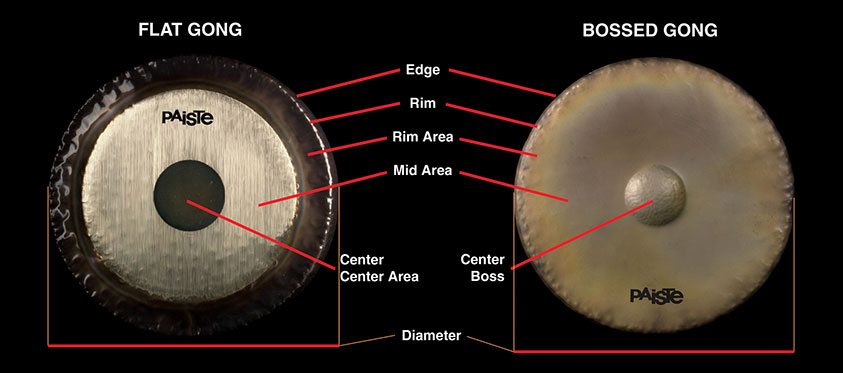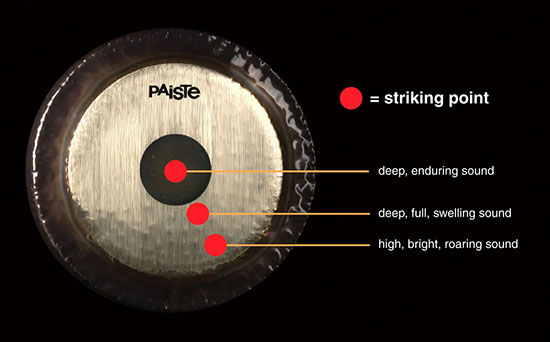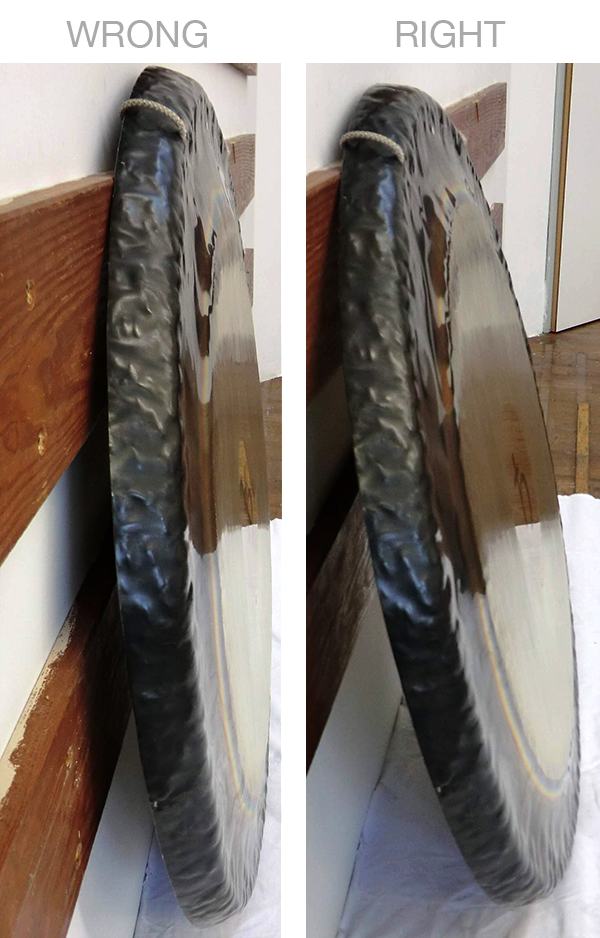
GONG STRIKING AREA
Depending on where the Gong is struck, it reacts differently with respect to sound.The following principle applies:

Each Gong, whether Symphonic Gong, Sound Creation Gong or Planet Gong has an ideal striking point at which its sound unfolds optimally according to its character and sound quality.
SUSPENSION OF GONGS
Each Paiste Gong comes with suspension made of string. Gut string is supremely as it minimizes the transfer of vibrations to the Gong-Stand. From time to time the gut string should be examined for wear and tear and, if necessary, be replaced. Each Gong should be suspended so that it may swing freely forward, back, and to the sides without touching the stand. Replacement gut string is available on request.GONG CLEANING
Gongs should be cleaned from time to time. Dirt, which builds up during set-up, playing and transporting, acts on the Gong like a damper and inhibits its natural vibration.Each Gong has a wax coating to guard against oxidizing and dirt build-up. During cleaning the coat is gradually removed and has to be replaced.
For cleaning, do not use grainy or acidic cleaning agents, as well as ones containing ammonia. Cleaning and waxing of the gong should always be done in direction of the shaving (if present) on the gong surface and only with slight pressure. Use colorless and soft cloth. Apply the cleaning agent to the cloth and clean the gong. Rub off any remaining cleaning fluid with two or three more pieces of cloth. Then apply a wax coat. Best suited is a fluid clear wax, such as is usually sold for cleaning and protecting wooden surfaces.
TRANSPORT AND HANDLING OF GONGS
Every Paiste Gong becomes a valuable musical instrument through the skillful craft and experience of the gong maker. Gongs should be handled with the same care that goes into making them.The following guidelines apply:
Any kind of pressure, such as stepping on, denting, or pushing on may deform the Gong and cause a change of sound.

Gongs should not be set on their edge. They may fall over and the rim may be deformed.

Gongs should always be laid face down. For transportation they should be placed within each other, face down. In order not to damage the surface, one should place some form of protection between gongs, such blankets or rubber foam.
 The safest mode of transportation are strong card board boxes or wooden crates with Rubber foam or blanket cushioning.
The safest mode of transportation are strong card board boxes or wooden crates with Rubber foam or blanket cushioning.Please do not wear any jewelry or clothes with zips or belts. It is important that metal objects do not touch the Gong.
When you use the flumi, please consider playing the rear of the Gong as the sound is the same and if it does leave a mark it will be on the back.
Please avoid finger to metal contact if possible. Use clean clothes are old T Shirts if possible.
If you do mark the front of the Gong don't worry but please use elbow grease and a clean cloth to remove it asap.
